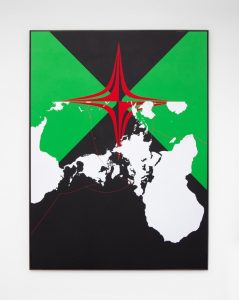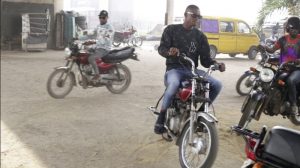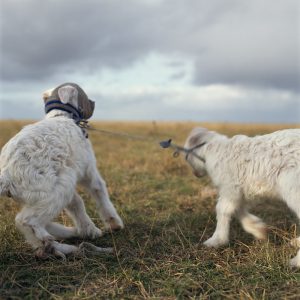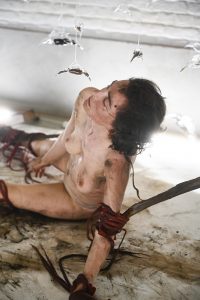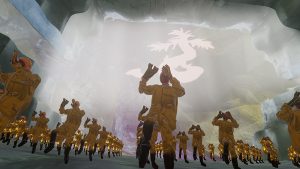The Centro Andaluz de Arte Contemporaneo in Sevilla is currently running an exhibition dedicated to Ant Farm, a group of experimental architects and critical artists active mostly in the ’70s. The exhibition includes videos, models, original drawings, inflatables and all the quiet you can expect in a cultural center located inside a stunning monastry on the bank of the Guadalquivir River, the Monasterio de la Cartuja de Santa María de Las Cuevas.
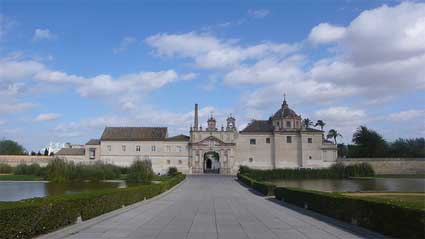 Monasterio de la Cartuja de Santa María de Las Cuevas
Monasterio de la Cartuja de Santa María de Las Cuevas
Founded in San Francisco in 1969 Ant Farm could be regarded today as a very effective mix between Archigram, the Rolling Stones and The Yes Men. Ant Farm embraced the latest technologies at the same time as they hit American culture on the head with their social and political comments and their highly critical (up to being in some cases destructive) approach to mass media. Their projects do not stop at the work of art itself, they also encompass the mass media rendering of that work of art.
All i knew about them was their rusty Cadillac Ranch installation which i do not like very much but the rest of their practice impressed me beyond words. I can’t think of any artistic group playing a similarly brilliant, innovative and multidisciplinary work today. Here’s a shortcut to their works:
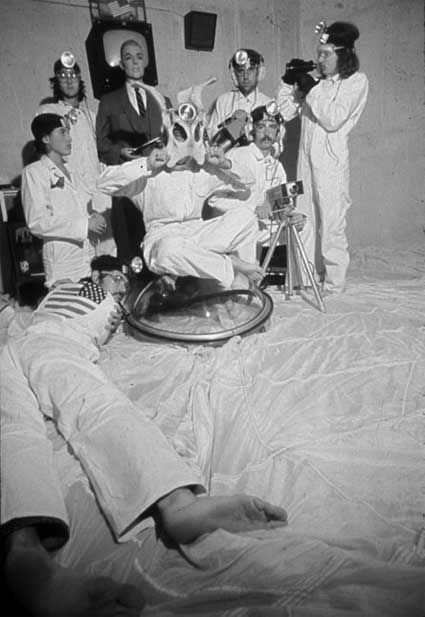 Ant Farm, Space Cowboy Meets Plastic Businessman, 1969. Performance at Alley Theater, Houston
Ant Farm, Space Cowboy Meets Plastic Businessman, 1969. Performance at Alley Theater, Houston
Ant Farm deployed their conceptual world through videos, manifestos, spectacular performances and installations until 1978, when they disbanded following a studio fire. Most of the slide and video documentation was saved, but very little else survived.
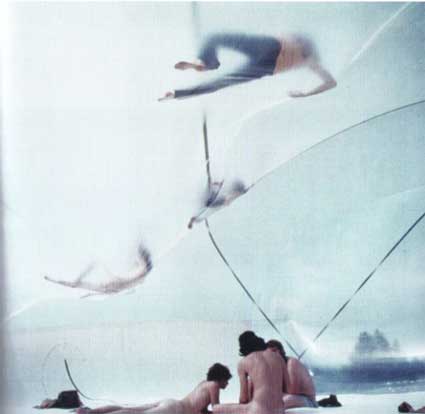 50×50 Foot Pillow, used as a medical pavilion at the Rolling Stones free concert at Altamont in 1969
50×50 Foot Pillow, used as a medical pavilion at the Rolling Stones free concert at Altamont in 1969
Ant Farm started their career as evangelists of inflatable structures. Cheap and easy to assemble, they challenged the American consumerism culture and fitted perfectly a nomadic, communal lifestyle, in total contrast with the Brutalist architecture prevalent in the United States during the 1960s.
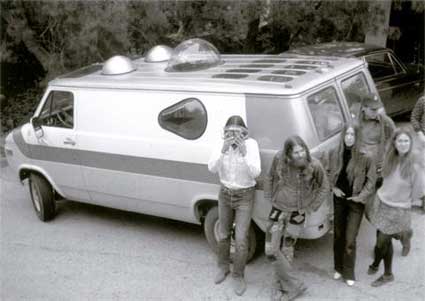
In 1971, they took the road abroad their Media Van, a customised Chevrolet van turned into a mobile studio to share information and images with the public while they toured the country to give talks and organize public happenings. The van not only transported the material necessary to build their ICE 9 inflatables but its motor was also used to generate the energy indispensable to blow up the structure.
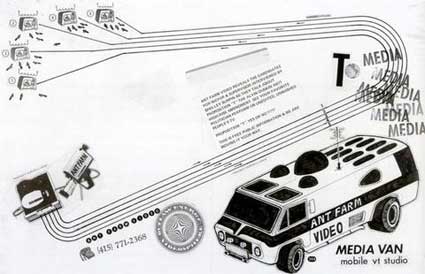
In 1972 the group built in Texas the House of the Century, a ferro-cement weekend residence with organic shapes that remind the inflatable structure that Ant Farm had realized a few years earlier, in particular their ICE 9 prototype.
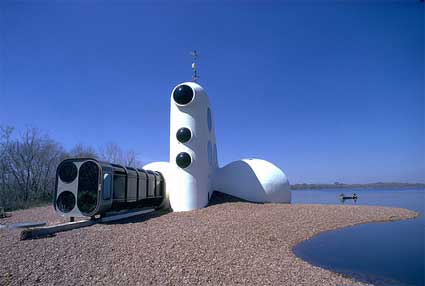 House of the Century, 1972
House of the Century, 1972
Video showing what the House was like before its decay:
The Dolphin Embassy was a never realized sea station in Australia which engaged with interspecies communication using the new video technologies. The structure would sail with the help of a solar mechanism.
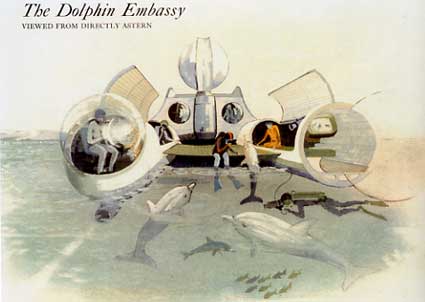
In 1974, Ant Farm created their most famous pieces in Amarillo, Texas, Cadillac Ranch. They half-buried a row of used and junk Cadillac automobiles dating from 1949 to 1963, nose-first in the ground, at an angle corresponding to that of the Great Pyramid of Giza. To add to the outrage done to the iconic vehicle, the public is very welcome to graffiti the cars.
 Image wikipedia
Image wikipedia
The installation was originally located in a wheat field, but was later moved 3 kilometers to the west, to a cow pasture in order to place it further from the limits of the growing city.
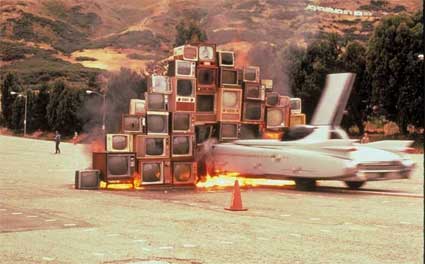
A year later Ant Farm staged the performance Media Burn. Dressed as astronauts, they drove at full speed a 1959 Cadillac into a wall of burning television sets. Media Burn critiqued American ideals of heroics and technological superiority, and offered an affront to the television media who were the only one invited to attend the event.
Their video of the performance is styled after news coverage of a space launch, including melodramatic pre-stunt interviews with the artists and a speech by “JFK” (impersonated by Doug Hall).
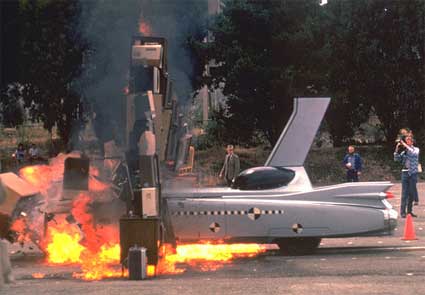 Short video and a 26 minute one.
Short video and a 26 minute one.
Media Burn was not their first attack of the media, in 1972 they collaborated with the video collective Raindance to launch the guerrilla Top Value Television (TVTV) to provide alternative coverage of the political conventions of that year.
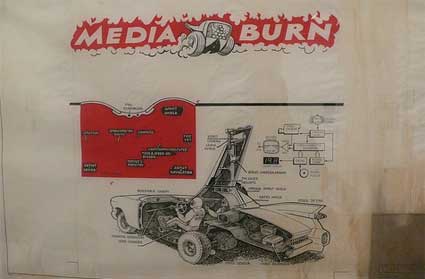
Let’s close the post with The Eternal Frame, a 1975 reenactment of the John F. Kennedy assassination. Part of it plays on America’s obsession with the media, but the video demonstrates also that the sacred images of the assassination cannot be mocked. The work can be read as a commentary on the pervasive media culture in America, as it explores how the Kennedy assassination itself became a new type of media event.
Video:
More images.
The exhibition of Ant Farm’s work is on view at the CAAC in Sevilla, Spain, until June 8, 2008.
Actar has just released Ant Farm – Living Archive 7. Felicity D. Scott has collected archival material to illustrate the early trajectory of the collective, including its architecture, inflatables, performance, multimedia, and video work.

